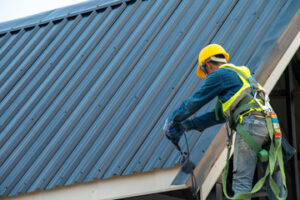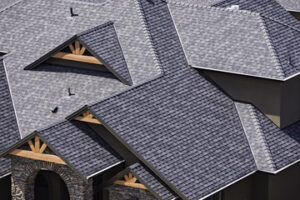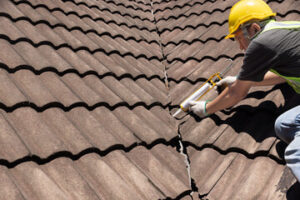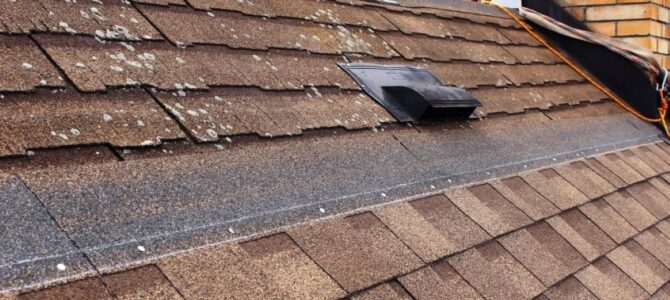There are many decisions that homeowners must make when choosing a roof for their home. One choice that can have a significant impact on your energy consumption is selecting an energy-efficient roof.
These roofing solutions can help lower energy costs, qualify for tax savings, and reduce your carbon footprint. Whether you are looking to lower your energy bills, improve indoor comfort, or increase your property value, there is a green solution for every budget. To learn more, contact Roofing Companies Temple TX specialists now.
Durability
The durable roofing materials used in energy-efficient roofs help reduce the amount of power a home requires to stay cool. In addition, the materials are long-lasting and require minimal maintenance to keep them looking great. Energy-efficient roofs also provide many benefits, such as lowering your utility costs, qualifying you for tax savings, and reducing the carbon footprint of your home.
There are several different types of energy-efficient roofing available for homeowners, including asphalt shingles, tile, metal, and synthetic slate. Each of these options has its unique qualities that make it more energy efficient. For example, asphalt shingles have a reflective coating that helps to reflect solar radiation and heat. These shingles can be installed on homes in most climates and can reduce cooling energy costs by up to 15%.
Tile roofs are also energy-efficient and have a high thermal emittance level. They can reduce energy usage by up to 40% in homes with adequate insulation and ventilation. This type of roofing is ideal for hot climates and can qualify you for tax credits. Metal roofs are another option that is becoming more popular for their energy-saving abilities. The material reflects sunlight and wards off harsh UV rays, which can help lower your energy consumption by as much as 25%.
Wood shingle roofs are also a good choice for energy efficiency. They are insulating and can reduce your HVAC usage by as much as 20%. This material is also environmentally friendly and can be recycled.
Energy-efficient roofs also need to be paired with proper attic insulation and ventilation to achieve their full potential. The most important factors to consider are your location and the climate, the color of your roof, and the roof design and layout. A light-colored roof is essential in areas with frequent sun exposure, but the insulation and ventilation are the most important elements to address for the best results.
Energy Efficiency
Choosing energy-efficient roofing materials is one of the best ways to reduce the bills in your home. By reducing energy consumption, homeowners can see immediate savings in their utility costs. A well-insulated roof will keep indoor temperatures stable, which will lessen the need for air conditioning and heating, which can often add up to astronomical utility bills.
Many different factors go into making a roof energy efficient, and the material and color of the roofing are major components. However, other elements, such as location, climate, roof design, and insulation can have just as much of an impact on energy efficiency.
If you live in a hot, sunny environment, or where your house is regularly exposed to the sun, it’s important to choose an energy-efficient roofing material that can help to reflect sunlight and lower cooling costs. The best energy-efficient roofing materials are typically lighter in color, which reflects the sun’s rays rather than absorbs them. Some of the more popular choices include asphalt shingles with reflective coatings, metal roofs, and clay or concrete tile roofs.
These types of roofs can reduce the building’s cooling cost by up to 40 percent when they are properly installed and insulated. This is because the reflected light keeps the attic cooler and cuts down on the need for air conditioning, which in turn lowers utility expenses.
The most energy-efficient roofing materials are also typically made from recyclable materials and are environmentally friendly. This makes them a great choice for anyone who wants to contribute to the sustainability of the planet while reducing their energy bills at the same time.
There are several other ways to make your home more energy efficient, including installing solar panels and other renewable energies. Using these methods, you can produce your energy and cut down on the need for traditional utilities that can contribute to high energy bills. In addition, a properly insulated roof and proper ventilation will prevent the volatile temperature of the attic from spilling into the rest of the house, which can cause energy bills to skyrocket during summer.
Recyclability
Whether you want to reduce your energy consumption or are just interested in the environment, eco-friendly roofing materials can help. Energy-efficient roofing materials are designed to reflect solar rays and release heat, rather than absorb them and transfer them into the home, which can save money on energy bills. Additionally, these types of roofing materials are designed to last longer than traditional shingles.
A variety of factors determine the energy efficiency of a roof, including its color, construction material, and climate. In general, lighter-colored roofs are more energy efficient than darker roofs. Light-colored roofs have a higher solar reflectance index, which helps to reduce cooling costs in warmer climates by reflecting heat. Darker roofing materials, on the other hand, have a low thermal emittance index and help to absorb heat in colder climates.
Other factors that contribute to a more energy-efficient roof include its insulation and ventilation. A well-ventilated roof allows for airflow, which can keep the interior of your home cool in the summer and warm in the winter. In addition, proper insulation slows the flow of conductive heat through your roof and walls, which can lower your heating and cooling bills.
Many homeowners are looking for ways to lower their energy bills, which is why they are interested in eco-friendly roofing options. Several different types of roofing materials are considered eco-friendly, including asphalt shingles, metal roofs, and tile roofs.
Energy-efficient shingle manufacturers often incorporate coatings and granules into their roofing materials that can make them more reflective and emissive, which can help to reduce your energy usage and utility costs. For example, certified roofing products that contain cooling granules can qualify for tax credits.
Metal roofing is another option that is gaining popularity among homeowners due to its durability and energy efficiency. Many metal roofing products today contain between 25% and 95% recycled materials, which reduces the need to use raw materials that clog landfills. Additionally, most metal roofing can be recycled at the end of its lifespan. This allows it to be used again in the construction of new buildings, which is beneficial for the environment and reduces energy costs.
Maintenance
Modern roofing materials are designed to last for decades and reduce energy costs. Homeowners who choose energy-efficient shingles are often rewarded with a rebate from the local power company. Energy-efficient roofing works by reflecting the sun’s rays rather than absorbing them. This keeps the home cooler and helps lower the energy bill by reducing the need for air conditioning. In addition, insulation is another way to help reduce the energy bills. The insulation must be chosen carefully and the roof properly installed to maximize its effectiveness.
The best energy-efficient roofing materials for your home depend on the climate in which you live. For example, a metal roof is an excellent choice in warm climates because it can save you 40% or more on your utility bills with proper ventilation and insulation. However, it may not be appropriate for cold climates because it can cause freezing and leaking problems.
Other roofing materials that are good for energy efficiency include asphalt shingles with an Energy Star rating, clay tiles, and green roofs. Some of these roofs are also made from recycled materials. If you’re reroofing your home, consider installing more insulation to increase the R-value and further improve your energy efficiency.
A common complaint among homeowners is rising energy costs. This is no surprise because electricity rates have risen by 13% in the past 20 years. To combat this, many homeowners have invested in new appliances and are taking steps to cut down on their power usage. But there’s one thing most people don’t think of when it comes to lowering their electric bill: the roof.
Traditionally, roofs have absorbed the sun’s rays and trapped heat inside. This is a problem because it requires the homeowner to use more energy to cool the house. But newer roofs have a much more reflective surface, so they reflect the sun’s rays instead of absorbing them. These types of roofs can help you save up to 15% on your power bills, especially during the summer months.
To take advantage of the energy-efficient benefits of a new roof, make sure it’s light in color, properly vented, and has plenty of insulation. This will help prevent unwanted heat from entering the home and keep it comfortable throughout the year.



